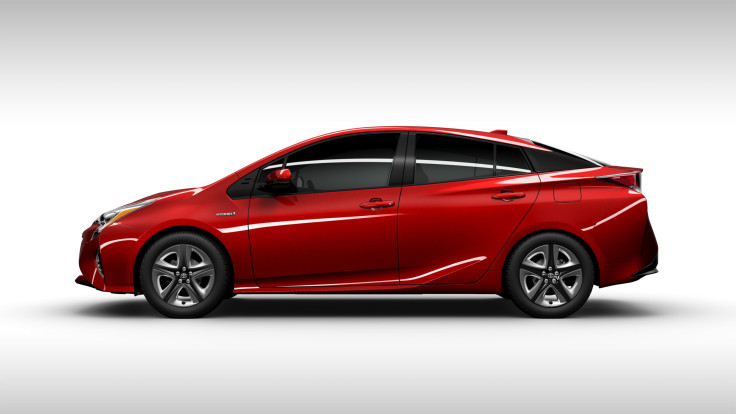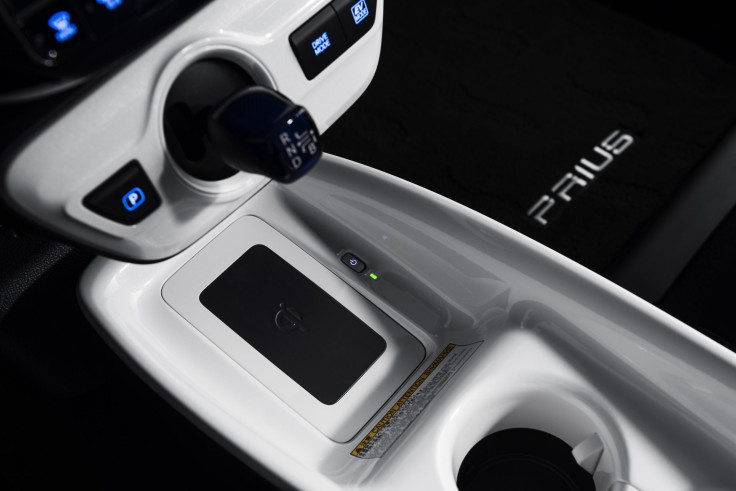Can The 2016 Toyota Prius Continue To Shine In An Increasing Crowded Market For Hybrids And Plug-Ins?

Toyota Motor Corp. secured its place in automotive history when it introduced the Prius in the late '90s. The car’s hybrid powertrain was so innovative at the time that Hollywood’s eco-conscious elites, including Leonardo DiCaprio and Cameron Diaz, were captured by the paparazzi driving the $20,000 sedan.
But that was then, and now that celebrities have ditched the pedestrian Prius for the Tesla Model S luxury sedan, Toyota is trying to make its dedicated hybrid car cool again by emphasizing features over fuel economy. The all-new fourth-generation 2016 Toyota Prius, which the company unveiled Tuesday night in Las Vegas, is more fuel-efficient than its predecessor, but equally important, it will have all the goodies of a modern four-door car.
“What Toyota needs to do is market the Prius as a great mid-sized car with great features and, oh, by the way, it also gets great mpg,” Akshay Anand, an automotive industry analyst at Kelley Blue Book’s KBB.com, said. “Prius has brand equity on fuel economy, but what else does it offer?”
The challenge for Prius is that high-mileage vehicles get diminished returns as they become more fuel-efficient, Anand said. So consumers are more likely to react positively to a jump from 20 miles per gallon to 30 mpg than they do when the mpg jumps from 50 to 55. Toyota hasn’t released fuel economy specs, but the new Prius gets 50 miles of combined city and highway driving, and most analysts expect the 2016 Prius to come in at around 55 mpg.
Fifty-five miles per gallon is nothing to shrug at, and Prius maintains its lead in the industry for gas-burning cars. But with a 55.8-mpg target for U.S. Corporate Average Fuel Economy standards by 2025, car manufacturers will be churning out more high-mileage options. The current Ford C-Max Hybrid gets a combined 40 mpg, while the Honda Accord Hybrid comes close to the Prius at 47 mpg.
Toyota has an immense lead on its competitors -- and a fiercely loyal customer base that pushed sales of the hybrid car from under 16,000 units per year in 2001 to a peak of nearly 237,000 in 2012. Sales have dropped since then and could fall well below 200,000 this year for the first time since 2011. To check that decline, Toyota has installed new features in the 2016 Prius, including a wireless charging port for smartphones, a high-tech center console and optional precollison auto-braking -- and by the way, it gets great mpg.

Rumors have it that Ford and Hyundai are working on Prius challengers, and Honda has hinted at a new product to replace its Insight, which was discontinued last year after failing to put a dent in Prius sales in the dedicated hybrid market. (Dedicated hybrids are cars built from the ground up on a hybrid powertrain. Unlike conventional hybrids, which have to be built to accommodate nonhybrid options like the Accord, dedicated hybrids are built solely as hybrids, which means lighter bodies.)
“Competition in the alternative-fuel space is fiercer than ever, especially with plug-in variants,” Eric Lyman, vice president of industry insights at TrueCar, said. “With the competitive set expanding and gas prices staying low, it will be tougher for the fourth-generation Prius to make the splash its predecessors did.”
Indeed, the new Prius is coming out just as gasoline prices have dipped this year to lows unseen since late 2008 at the start of the Great Recession. When the third-generation Prius was introduced for the 2010 model year, gasoline prices were rising and Americans were still reeling from the collapse of the U.S. housing market. In an act of senselessness, American consumers gravitate to less fuel-efficient cars if gas prices are low around the time of their purchase, even if they know in the long run they’ll wind up paying more at the pump over the life of their vehicles.
The new Prius is 2.4 inches longer, 0.6 inches wider and 0.8 inches lower, which gives the new model more interior space. Pricing and more specifications, including Toyota’s estimated fuel economy, are due out before this year’s Tokyo Motor Show, which begins Oct. 29.
© Copyright IBTimes 2024. All rights reserved.












